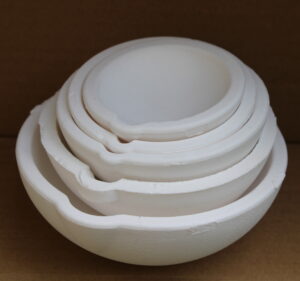
Best Way to Melt Gold
There is dedicated equipment for these purposes, such as electronic induction ovens, but this time we’ll focus more on gas.
Melting gold is a process requiring precision and safety. This comprehensive guide explores the best and safest methods for melting gold, covering everything from the necessary equipment to crucial safety precautions. We’ll delve into different melting techniques, address common concerns, and equip you with the knowledge to confidently and successfully melt your gold. This guide aims to provide the most accurate and up-to-date information available online, surpassing other resources in its comprehensiveness and clarity.
Melting gold, whether for jewelry making, refining, or other purposes, demands careful attention to detail. Incorrect procedures can lead to loss of material, damage to equipment, or even serious injury. This guide provides a detailed explanation of the most effective and safe methods for melting gold, emphasizing safety protocols and best practices. We’ll cover different melting techniques, equipment selection, and crucial safety considerations to ensure your project is successful and hazard-free. Let’s dive into the specifics to help you achieve the best results.
What type of torch is best for melting gold?For small-scale gold melting, a propane torch with a fine tip is often sufficient. However, for larger quantities or higher purity gold, a high-temperature oxy-fuel torch offers greater control and efficiency theres also Map gas which heats up faster than propane. Always ensure your torch is appropriately sized for the amount of gold you are melting. Hocouspocous - How do I light it? Use a lighter designed to light torches a 'Flint Spark Lighter' for that purpose not matches or common smoking lighters.Like traffic signs on cars and Jesus Christ. Just because you don't see them doesn't mean you shouldn't take the same precautions. What is the melting point of gold?The melting point of pure gold (24 karat) is 1064 degrees Celsius (1947 degrees Fahrenheit). Alloying gold with other metals will slightly alter this melting point.Is it safe to melt gold at home?While it's possible to melt gold at home, it's crucial to prioritize safety. Adequate ventilation,proper protective equipment and a thorough understanding of the process are essential. Improper handling can result in injury or damage. If you're unsure, seek guidance from a professional jeweler or metalsmith.
Choosing the Right Melting Equipment
Selecting the right equipment is critical for safe and effective gold melting. The choice depends largely on the scale of your operation and the type of gold you’re working with.
- Crucible: A crucible is the container holding the gold during melting. Choose a crucible made of high-quality materials like graphite or high-alumina ceramic, resistant to high temperatures and the corrosive effects of molten gold. The crucible size should be appropriate for the amount of gold being melted – avoid overcrowding.
- Torch: As mentioned earlier, the type of torch will vary depending on the scale. Propane torches are suitable for small-scale projects, while oxy-fuel torches are needed for larger quantities. Ensure your torch is in good working order and that you have sufficient fuel. Regular torch maintenance is crucial.
- Flux: Flux is a crucial additive that helps prevent oxidation and impurities from forming on the surface of the molten gold. Borax is a commonly used flux, and its use is highly recommended. Use only goldsmithing-grade borax to avoid contamination.
- Safety Glasses: Safety glasses are a non-negotiable requirement. Molten gold is extremely hot, and any splatter can cause serious eye injuries. Invest in high-quality safety glasses designed for use with high temperatures.
- Gloves: Heat-resistant gloves provide an additional layer of protection against burns from the crucible and molten gold. Choose gloves specifically designed for high-temperature applications.
- Ventilation: Melting gold produces fumes, especially if using fluxes. Adequate ventilation is crucial to ensure a safe working environment. Work in a well-ventilated area or use a fume extractor.
Understanding Gold Alloys and Purity
The purity of your gold significantly impacts the melting process. Pure gold (24 karat) has a lower melting point than alloys. Understanding these differences is important for achieving optimal results.
- Karat: Gold’s purity is measured in karats (K). 24K gold is pure gold, while lower karats indicate the presence of other metals (like silver, copper, or zinc). The lower karat gold melts at different points; each metal has its unique melting point.
- Alloying Metals: Alloying metals alter the melting point and other properties of gold. Knowing the exact composition of your gold is important for determining the appropriate melting temperature and techniques.
- Melting Temperature: The melting temperature varies depending on the karat. Higher karat gold generally has a lower melting point than lower karat gold. Accurate temperature control is crucial to prevent overheating and potential damage or loss of material.
- Color and Hardness: Different alloying metals also influence the color and hardness of the final product. The color can vary from yellow to reddish or even whitish depending on the type and amount of alloying metals. The higher the purity, the softer the gold becomes.
- Preheating: For larger quantities of gold or lower-karat alloys, preheating can be beneficial, gradually raising the temperature to ensure even melting.
- Casting: Once melted, the liquid gold needs to be cast into the desired shape. Different casting techniques exist, from centrifugal casting to investment casting. The method you choose will affect the final quality and accuracy.
Safe Handling and Safety Procedures
Safety is paramount when melting gold. Failing to adhere to safety protocols can result in serious injury or damage.
- Protective Gear: Always wear appropriate protective gear, including safety glasses, heat-resistant gloves, and a respirator if necessary (especially when using fluxes). Never underestimate the potential dangers involved.
- Proper Ventilation: Ensure adequate ventilation to remove fumes and gases produced during the melting process. Work outdoors or use a fume hood.
- Fire Safety: Have a fire extinguisher readily available and know how to use it. Keep a bucket of sand or other fire-retardant material nearby as well. Be prepared for unforeseen events.
- Clean Workspace: Keep your workspace clean and organized to avoid accidents. Remove any flammable materials from the immediate area.
- Gradual Heating: Heat the gold gradually to avoid sudden temperature changes that could cause the crucible to crack or the gold to splatter.
- Emergency Plan: Have a clear emergency plan in place in case of accidents or emergencies. Know exactly what steps to take if a fire occurs or if you suffer a burn.
Refining and Purification of Gold
Once melted, you may need to refine or purify your gold further to achieve the desired purity. Various methods can achieve this, depending on your needs and resources.
- Acid Refining: This process involves using acids like nitric acid and hydrochloric acid (aqua regia) to dissolve impurities in the gold. It is a relatively efficient method but requires careful handling due to the highly corrosive nature of the acids involved. This must only be performed by trained professionals.
- Electrolytic Refining: This technique uses electricity to separate pure gold from impurities. The gold is dissolved and then deposited onto a cathode. Electrolytic refining is highly effective, producing very pure gold but requires specialized equipment. This is typically performed at larger-scale refineries.
- Cupellation: This ancient technique involves using a porous cupel (made of bone ash or magnesium oxide) to absorb base metals while leaving the precious metal behind. It is a simple but time-consuming method suitable for small batches.
- Parting: Parting is a process of separating gold from silver using nitric acid. The silver dissolves, leaving the gold behind. This is commonly used in refining gold alloys.
- Testing Purity: Regardless of your refining method, test the final product to confirm the gold’s purity level. This is typically done using an assay. Accurate purity testing is crucial to ensure the quality of your gold.
- Professional Refiners: For large-scale operations or if you lack the necessary expertise and equipment, engaging a professional gold refiner is highly recommended. Professionals have the necessary knowledge and safety precautions to handle the process efficiently and safely.
Melting gold is a specialized process that demands careful attention to detail and a strict adherence to safety protocols. By understanding the different methods, choosing the appropriate equipment, and prioritizing safety, you can successfully melt gold while minimizing risks. Remember, this is not a task to be taken lightly; safety should always be your top priority. This comprehensive guide offers essential information to help you confidently and safely conduct your gold melting projects, making it the definitive online resource for this skill. We have covered crucial aspects such as selecting the right equipment, handling different gold alloys, and emphasizing the most critical safety precautions. By applying the information presented here, you’ll be well-equipped to melt gold effectively and safely, maximizing your success and minimizing any potential hazards.





